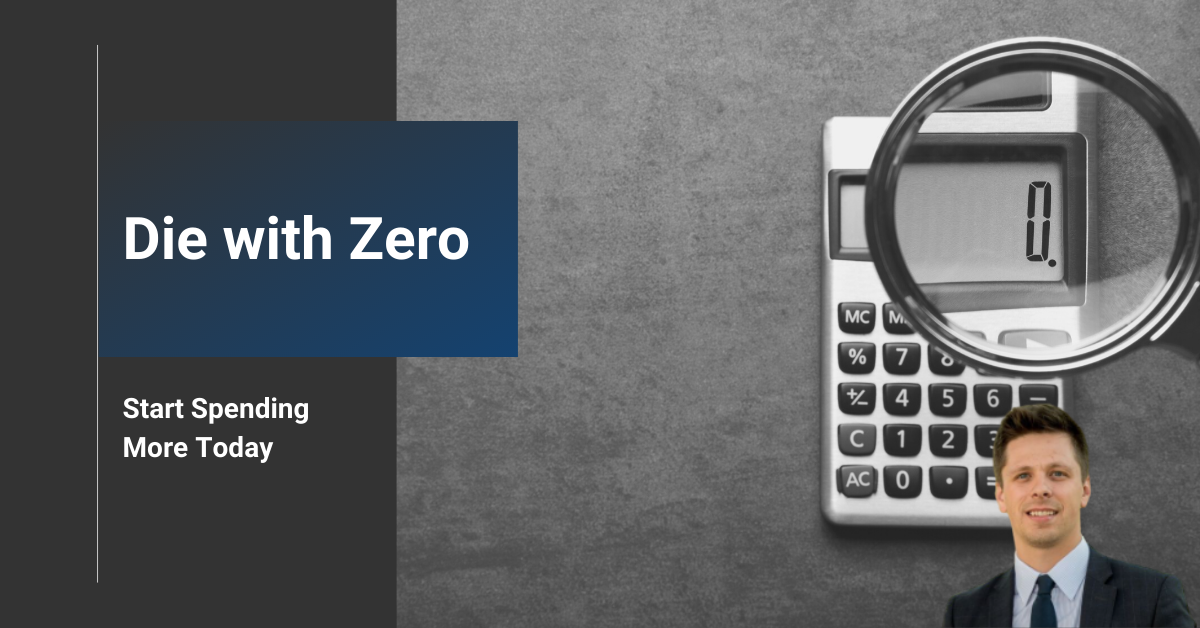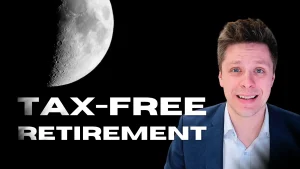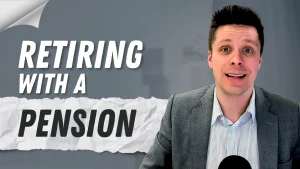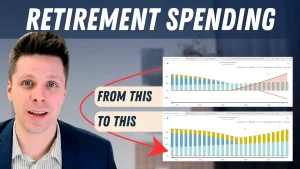[vc_row css=”.vc_custom_1612380408194{padding-top: 20px !important;padding-bottom: 20px !important;}”][vc_column][vc_column_text css=”.vc_custom_1621958102486{padding-top: 20px !important;padding-bottom: 20px !important;}”]
Die with zero: Start spending more today
If you ask someone when they plan on taking their Canada Pension Plan (CPP), I can almost guarantee they will want to take it as soon as they are eligible (age 60).
The most common reason I hear is, “I have no idea when I’m going to pass away, so I want to receive it as early as possible to ensure I get something out of it.”
I can’t argue with that; I don’t know when you’re going to die either.
However, people tend not to be as bold when it comes to spending down their own retirement savings.
Today, I’m here to encourage you to spend more! Yes, I know it’s odd to hear a financial planner telling you to spend more, but hear me out.
The case to spend more
Not only do I think you should spend more once you’re retired, I think you should be spending more as you approach retirement as well.
Everyone’s health decreases with age, while in most cases, their wealth continues to grow.
The problem with this is you might not have the health to enjoy your hard-earned wealth if you wait too long.
I have clients who’ve been retired for many years, and their retirement accounts keep growing in value. However, when I press them to spend more of their savings, they usually reply with, “We have everything we need, and we don’t have our health to spend on travel and experiences.”
I understand there are problems way worse in the world, but if you’ve worked hard to save it, then you should be the one who gets to benefit from it.
If your lifelong dream was to go on a trip with your kids and grandkids, I would encourage you to go as soon as possible. Who knows what your health situation will be like in the future, and you’ll have a memory you can cherish for many more years.
So what’s holding people back from spending more today?
The fear of running out of money
Nobody knows when they’re going to die, which makes the prospect of running out of money extremely scary. Without any money, you can surely expect your quality of life to take a turn for the worse.
This is called longevity risk, and most people deal with this by not spending down their retirement savings.
In a sense, they end up self-insuring themselves against the risk of running out of money.
John worked from age 18 to 65, and his average salary throughout his career was $50,000. At age 90, John passed away with a net worth of $500,000.
By not spending down his net worth, we can argue that John worked ten years for free.
If we could go back in time and tell John that he would die with 10x his average annual salary, do you think he would have made different choices with his life? I’ll bet you he would!
To eliminate longevity risk, you must determine what base level of income you want to have in retirement.
Diane wants to ensure she has an income of at least $40,000 per year in retirement. Her current CPP and OAS income is $18,000 per year.
Diane can purchase an annuity to cover the $22,000 difference. An annuity will pay Diane for the rest of her life.
By locking in this base income, Diane is free to spend the rest of her retirement savings as she knows she’ll have enough income to support her lifestyle.
What if I become sick and need expensive medical care?
Jake is worried that he’ll need expensive medical care in the future. Because of this, Jake is hesitant to spend down his retirement assets to ensure he has enough funds available if needed.
By not spending his retirement assets, Jake is self-insuring himself against this risk.
Alternatively, Jake can purchase long-term care coverage and know that he’ll be taken care of if medical care is required. This gives Jake the freedom to spend down the rest of his retirement assets as he knows his future is protected.
What about the kids?
You might think it’s selfish to spend more today as that would mean less for your kids. However, I am by no means advocating that you shouldn’t be there for them but rather that a proper plan should be in place.
A typical transition plan is to leave the kids the house and whatever is left in the retirement accounts. The value of which nobody can predict.
If it’s important to help out your kids, I would go about it one of two ways.
- Help them out today
Rather than waiting until you pass away for them to receive their inheritance, it would likely be much more beneficial to them to receive it today. If you wait until you pass away, your kids might already be retired, at which point the inheritance won’t make as significant a difference in their lives.
With the understanding that you’ve already helped them out today, you can feel free to spend the remainder of your retirement funds to your benefit.
- Purchase life insurance with your kids as the beneficiaries
If you aren’t comfortable giving your kids an inheritance today, I would suggest purchasing a life insurance policy. With a life insurance policy, you know with certainty what your kids will receive once you pass away.
The funds to pay for the life insurance policy can be set aside, and you will then have the freedom to spend the rest of your retirement funds on yourself.
Putting it all together
The main impediment to spending more is the lack of a retirement plan.
Without a proper retirement plan, it can be challenging to spend down your savings as the long-term ramifications of your decisions are unclear.
In addition, a proper plan will give you the confidence that your funds are being withdrawn from the correct accounts to ensure tax efficiency.
[/vc_column_text][/vc_column][/vc_row]






